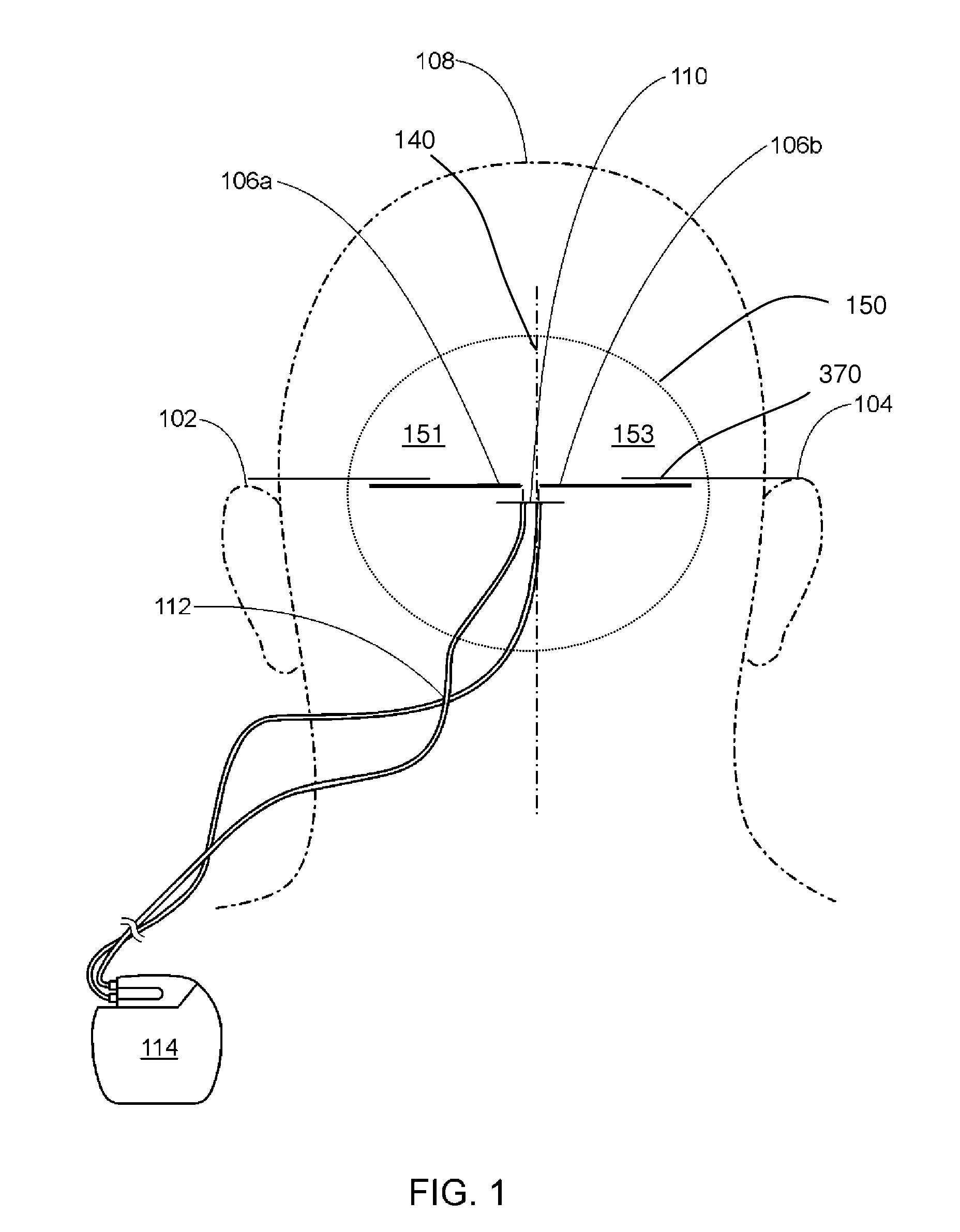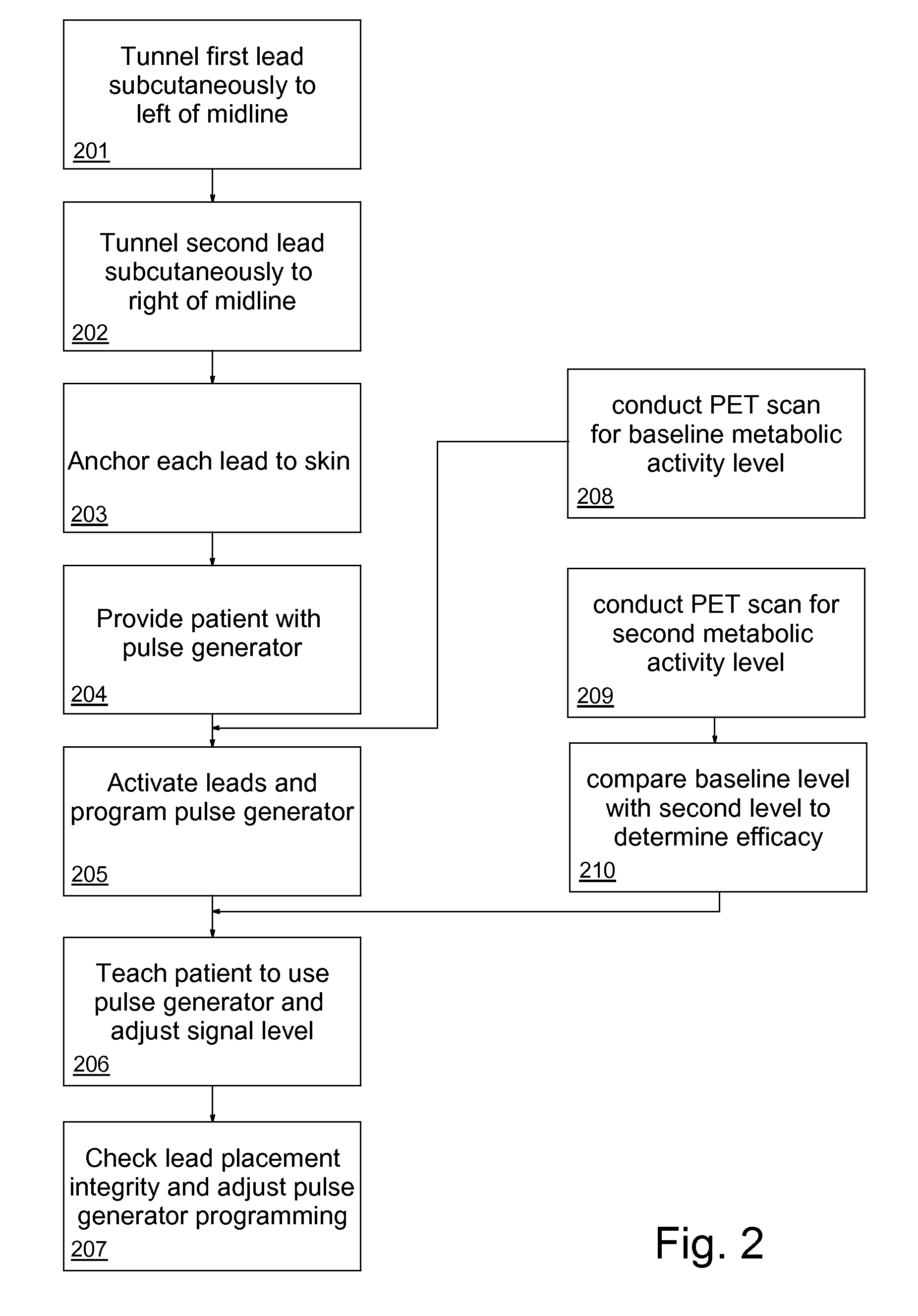Occipital neuromodulation method
a neuromodulation and occipital technology, applied in the field of human pain treatment, can solve the problems of abnormal metabolic activity of the brain area, unsuitable for more wear on the body, and complex structure, and achieve the effect of reducing the pain of the subject and testing the efficacy of the devi
- Summary
- Abstract
- Description
- Claims
- Application Information
AI Technical Summary
Benefits of technology
Problems solved by technology
Method used
Image
Examples
case # 1
[0082]Case #1: Patient S.B. (Migraines)
[0083]The patient is a 39 year-old female has an over 20-year history of migraines. She had seen neurologists, and had failed medication management. She got temporary relief with occipital nerve blocks and temporalis muscle injections. She underwent trial of occipital neuromodulation. On the first day of the trial, she reported 100% relief. She completed a month long trial. During that month, she had no migraines. She reported 100% relief the same day. At one month, three months, and six months she reported 100% relief of her migraines.
case # 2
[0084]Case #2: Patient A.A. (Traumatic Spine Injury, Headache)
[0085]The patient is a 23 year-old male with 13-year history of headaches and neck pain after a traumatic fall which injured his cervical spine. He had been to multiple neurologists, chiropractors, and physical therapists. He obtained 30% relief from cervical facet joint injections. The patient had radiofrequency neurolysis (destruction of the nerves) of the cervical facet joints which gave him 30% relief for several weeks (much shorter duration than usual). He underwent a trial of occipital neuromodulation. After five days, he reported 75% relief. His trial lasted eight days. He then received a permanent implant. At one month, he reported 90% relief of his headaches. At three months, he reported 100% relief of his headaches. At six months, he reported 100% relief of his headaches.
case # 3
[0086]Case #3: Patient R. A. (Traumatic Brain Injury, Migraine)
[0087]The patient is a 49 year-old male with history of crush injury to his skull seven years prior to considering occipital neuromodulation. An 18 pound rock fell six stories onto his head at a construction site and caved in his skull on the left side. He fell into a snow bank and was discovered approximately six hours later. He was airlifted to a trauma center where it was discovered he had bleeding in the brain, out of both ears, and his mouth. He eventually recovered but had residual symptoms. The patient suffered from constant headaches. Due to his confusion, he has been struck by motor vehicles when he wanders into the street on several occasions resulting in damage and pain in his shoulders, hips, upper back, lower back, and knees. He had failed medication management and physical therapy. He underwent a trial of occipital neuromodulation. The same day he noted 100% relief of his headaches and over the ensuing week...
PUM
 Login to View More
Login to View More Abstract
Description
Claims
Application Information
 Login to View More
Login to View More - R&D
- Intellectual Property
- Life Sciences
- Materials
- Tech Scout
- Unparalleled Data Quality
- Higher Quality Content
- 60% Fewer Hallucinations
Browse by: Latest US Patents, China's latest patents, Technical Efficacy Thesaurus, Application Domain, Technology Topic, Popular Technical Reports.
© 2025 PatSnap. All rights reserved.Legal|Privacy policy|Modern Slavery Act Transparency Statement|Sitemap|About US| Contact US: help@patsnap.com



